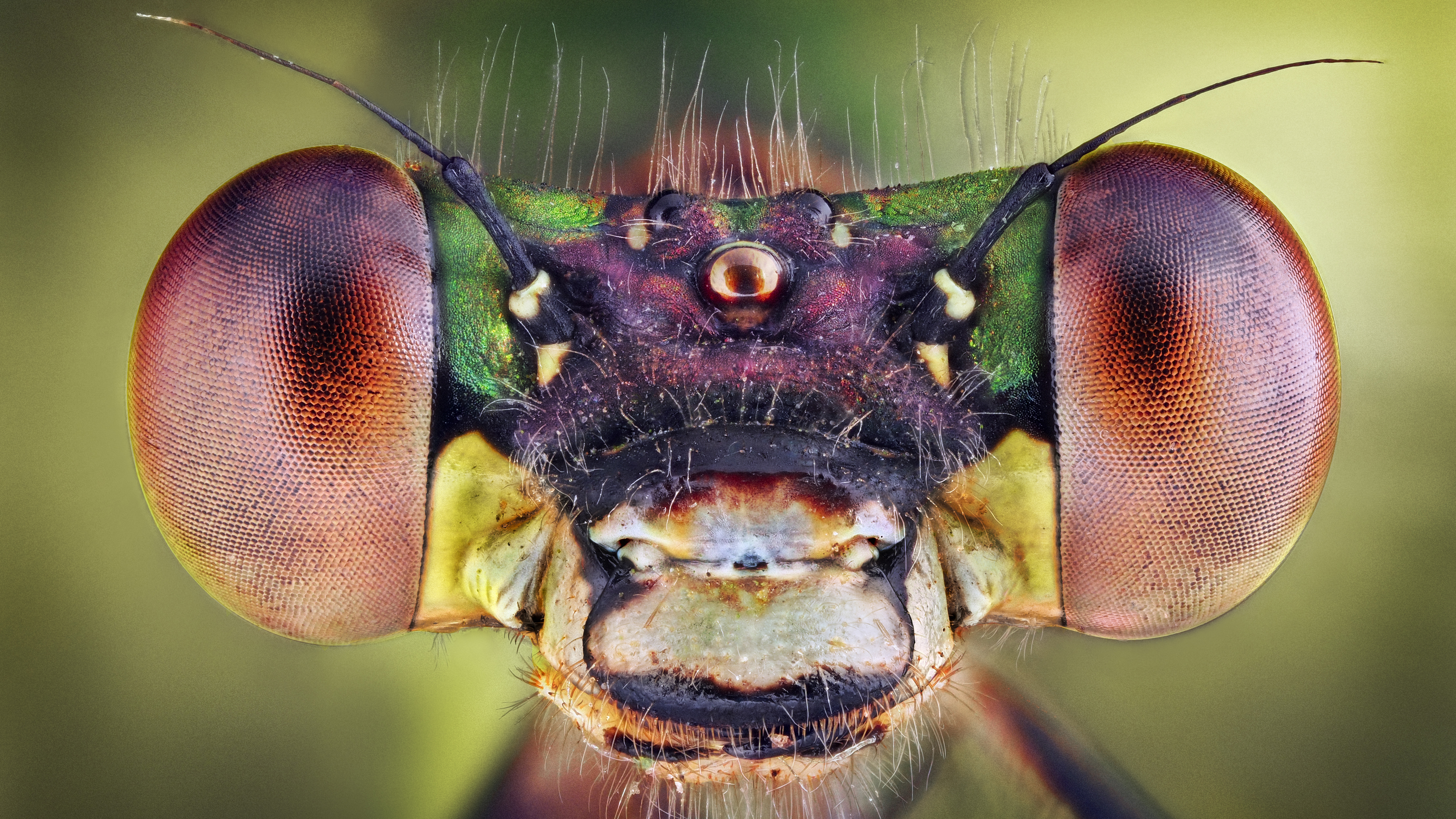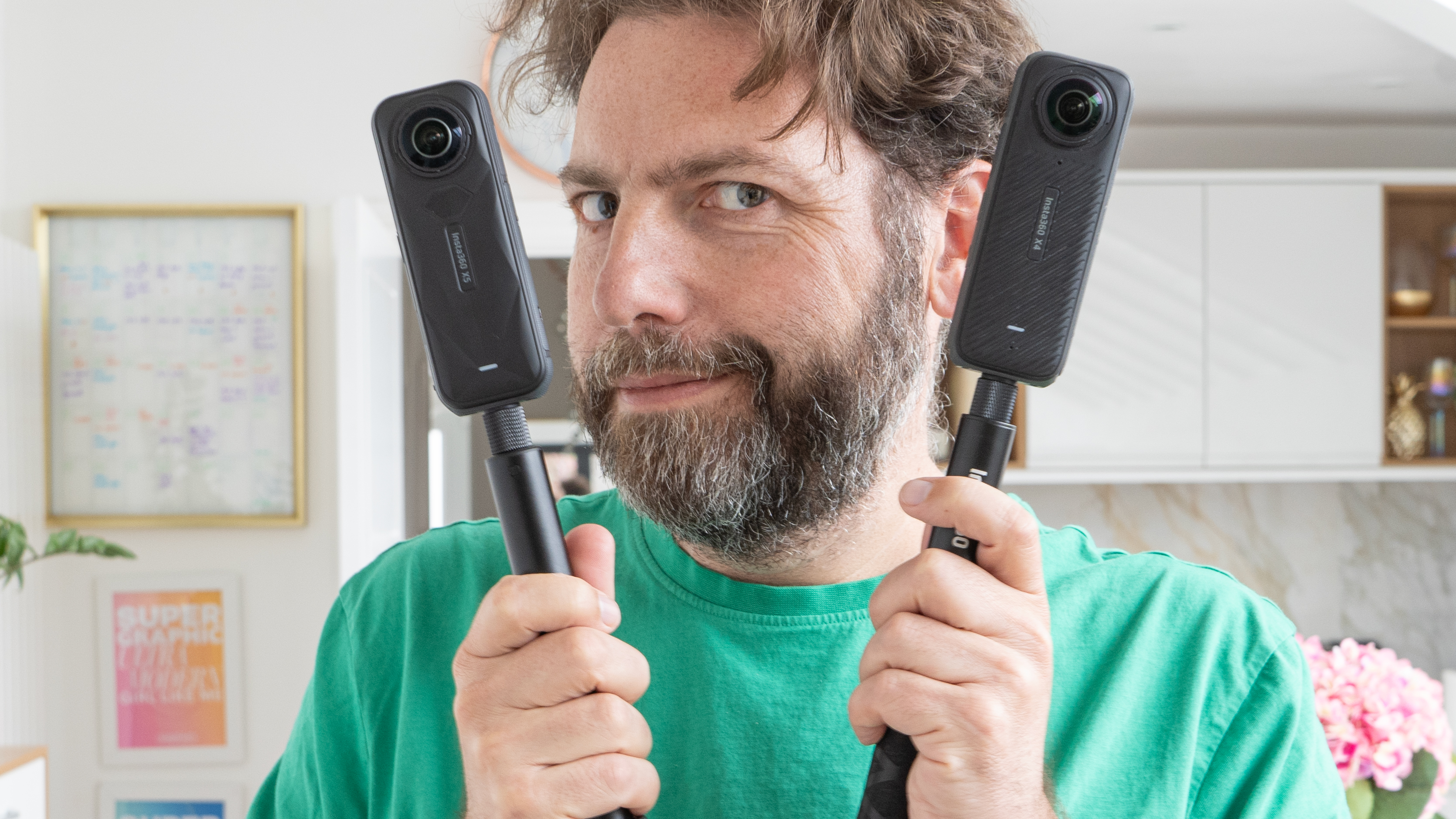Scientists are imitating bug eyeballs to help smartphone cameras suck less at low light photos
This experimental tiny camera can take photographs in less than one-thousandth of a lux

The optics in future camera phones and surveillance cameras could be heavily influenced by the eyes and brains of insects. New research published in Science Advances suggests that building microlenses like those in the eyes of dragonflies and fruitflies could help improve the low light image quality on smartphone cameras, as well as potential applications in security cameras and medical devices.
The research isn’t the first to take inspiration from the eyes of insects, but rather aims to address the shortcomings of such devices by improving the speed and low light ability. Published in the January 01, 2025 issue, the research expands on earlier projects creating cameras with microlens arrays, or a series of lenses inspired by the multiple optical channels in insect eyes.
Microlens arrays have been noted for maintaining an incredibly small size while offering a wide-angle view, high-resolution files and fast speeds.
The researchers explain that microlens arrays typically suffer from poor image quality in low light. Because there are several small lenses rather than one large one, the microlens cameras have narrower apertures or lens openings, letting in less light and reducing image quality in poor lighting conditions.
To help solve the issue, the researchers built a microlens camera that overlaps the exposure time from the different lenses, increasing the amount of light that the tiny camera is able to gather. Insects such as dragonflies process what’s coming through the multiple optical channels by using parallel processing and temporal summation, or adding up the signals in the optic lobe.
Inspired by those insects capable of spotting fast-moving prey, the researchers sought to create a camera that processes the images coming through a multilens array in a similar way.
While longer exposure time is typically associated with motion blur, the experimental camera segments overlapping information from the different lenses to reconstruct the image. By processing those images while employing overlapping areas, the researchers were able to reduce blur from the longer exposure time, creating a camera that was able to take a photograph in lighting as dim as one-thousandth of a lux.
Get the Digital Camera World Newsletter
The best camera deals, reviews, product advice, and unmissable photography news, direct to your inbox!
(One lux is equivalent to the light from a candle one meter away, so one thousandth of a lux is quite dark.)
At the same time, the researchers were also able to use that segmentation of overlapping data to increase the frame rate to up to 9120 fps without increasing noise.
The reconstructive process, the researchers said, also helped reduce rolling shutter distortion. The experimental camera uses a Sony-made rolling shutter CMOS sensor. Because the sensor exposes one row of pixels at a time, fast-moving objects appear misshapen. But the researchers said the experimental camera was able to reduce that distortion.
The microlens array camera could also potentially use that overlapping information for a super-resolution mode, using an algorithm to enhance the image size. Three-dimensional imaging is another possibility, the paper notes.
While the researchers were able to demonstrate an improvement in low light quality and a faster frame rate, the group noted that there are still some obstacles to overcome. Video from microlens array cameras creates “wavy distortions,” the study’s authors noted. Removing the blur also comes with a higher computational cost.
Despite those shortcomings, the tiny camera could inspire future technology. “This compact, high-speed, and high-sensitive camera can provide a distinct route for diverse imaging applications in healthcare, smartphone, drones, or automobile,” the study’s authors conclude.
You may also like
For more, browse our favorites for the best macro lenses or the best smartphone cameras.

With more than a decade of experience reviewing and writing about cameras and technology, Hillary K. Grigonis leads the US coverage for Digital Camera World. Her work has appeared in Business Insider, Digital Trends, Pocket-lint, Rangefinder, The Phoblographer and more.
